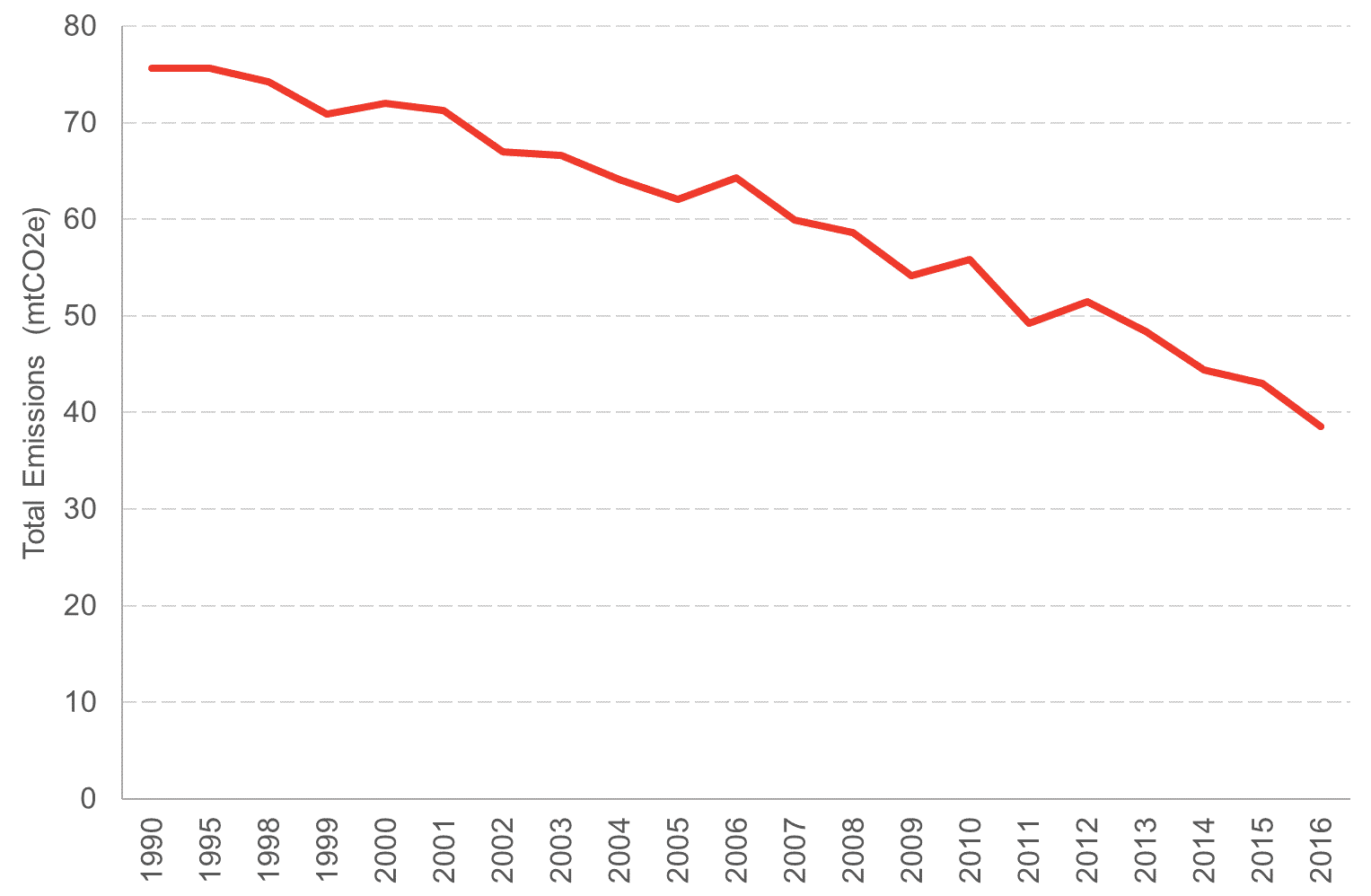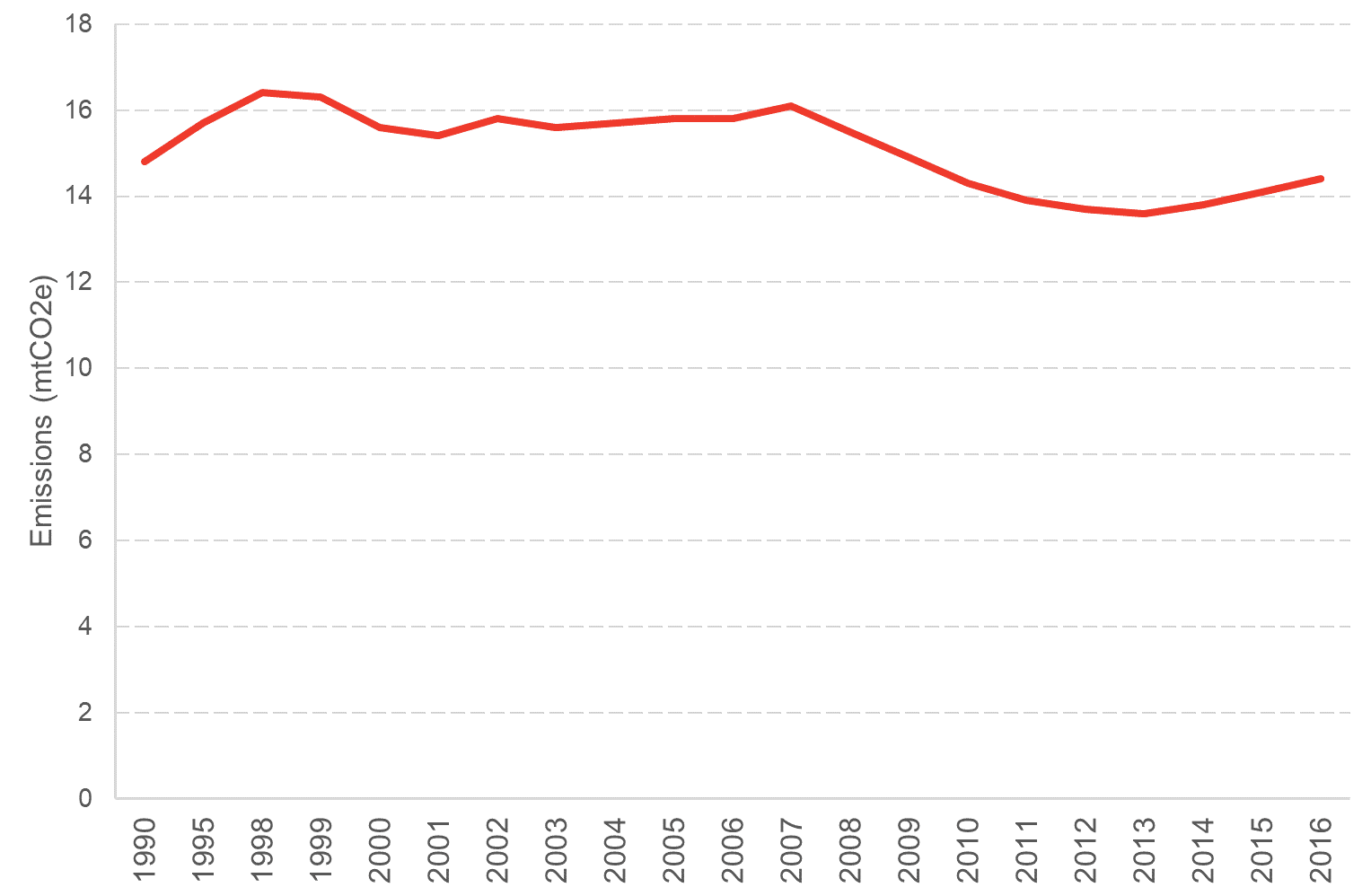This blog was written by Anna Maclean, a 6th year high school pupil, who was at the Fraser of Allander Institute for two week’s work experience.
In April, the Scottish Government declared a climate emergency after Scotland’s First Minister Nicola Sturgeon announced how much she had been inspired by young protesters who went on strike to urge action.
Climate change has long been on agenda in Scotland. In 2009, the Scottish Parliament passed a ground-breaking Climate Change Act which legally bound the government to reduce emissions by 80% by 2050 from the baseline year (1990).
This has now been strengthened to achieving net zero emissions by 2045 – five years ahead of the UK.
But whilst declarations of change are welcome, delivering such a fundamental change in our economy won’t be easy. As the UK Committee on Climate Change stated earlier this summer, it’s not clear that policymakers – across the UK – have yet to fully appreciate the scale of the policy shift required.
To help understand the scale of change, we can look at how well Scotland has managed to reduce emissions in the past.
Chart 1 highlights that Scotland has seen significant emission reductions since 1990, with total emissions almost half the 1990 level.
Chart 1: Total emissions in Scotland, 1990 – 2016

Source: Scottish Government
Scotland has performed well compared to other EU countries – with the 5th biggest reduction out of all EU member states.
Chart 2: % change in emissions for EU countries, 1990 – 2016
Source: Scottish Government
However, Scotland still produces more emissions per capita than a number of European countries – although at 7.14 mtCO2e per capita in 2016 is below the EU average of 8.29 mtCO2e per capita – there is clearly still work to be done.
Chart 3: Emissions per capita for EU countries, 2016
Source: Scottish Government
Within the UK, Scotland has seen the highest reduction of emissions since 1990 however as Chart 4 shows, it still has slightly higher emissions per capita than England.
Chart 4: Emissions per capita within the UK, 2016
Source: Scottish Government
One of the main areas where Scotland has seen a decrease in emissions has been in energy supply which has gone from being the sector that had the highest emissions, producing almost 30% of total emissions, to producing less than 20% of total emissions in 2016. See Chart 5.
Chart 5: Scottish emissions by sector
Source: Scottish Government
Much of the reduction comes from the sharp growth in renewable sources of energy.
Chart 6 highlights that Scotland has the second highest percentage of renewable electricity in the EU, increasing its share from 20% in 2007 to 70% in 2017.
But interestingly, within the EU, Scotland has the lowest percentage of renewable heat as a percentage of gross consumption.
Chart 6: Renewable electricity as a % of gross consumption for EU countries
Source: Scottish Government
Waste management has also seen a significant decrease in emissions (down 73%) – largely due to the rise in recycling. The percentage of waste being recycled has seen a steady increase since 2000 when it was only 4.5% to 45% in 2016. See Chart 7.
Chart 7: Emissions from waste management, 1990 – 2016
Source: Scottish Government
On sector that hasn’t seen much change since 1990 is Transport.
Chart 8 shows that Transport emissions have remained roughly the same since 1990, producing 14.8 mtCO2e in 1990 and 14.4 mtCO2e in 2016.
Due to the lack of change in emissions from transport, by 2016 it was the sector with the highest emissions, producing around 37% of the total. Part of this comes from the fact that just over 3% of the energy used for transport came from bio-fuels meaning that even though energy supply has experienced a decline due to increased renewable energy, transport hasn’t.
This explains why, in part, the government has invested significantly to de-carbonise the transport sector – including substantial investment in rail electrification, the removal of new petrol or diesel cars or vans by 2032 and the dropping of their manifesto commitment to halve aviation tax.
Chart 8: Emissions from Transport, 2016
Source: Scottish Government
Overall, Scotland has seen a fairly constant decline in greenhouse gas emissions since 1990. Arguably however, many of the changes that have been made have been in ‘quick-wins’ such as renewable energy and waste management. Some of the more tougher challenges – both politically and technologically – still remain.
But it would be churlish not to recognise the significant progress that has been made. To maintain momentum, the main areas to focus on are likely to be in transport and heating. A system-wide approach, including increased activity in the forestry sector, is likely to be crucial.
Authors
The Fraser of Allander Institute (FAI) is a leading economy research institute based in the Department of Economics at the University of Strathclyde, Glasgow.






